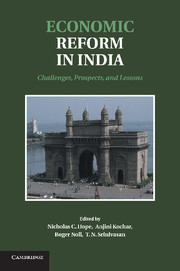52 results
Statistical properties of cold circumstellar envelops observed in NESS–NRO
-
- Journal:
- Proceedings of the International Astronomical Union / Volume 17 / Issue S370 / August 2021
- Published online by Cambridge University Press:
- 16 August 2023, pp. 97-99
- Print publication:
- August 2021
-
- Article
- Export citation
Strain-mediated magneto-electric interactions in hexagonal ferrite and ferroelectric coaxial nanofibers – CORRIGENDUM
-
- Journal:
- MRS Communications / Volume 10 / Issue 4 / December 2020
- Published online by Cambridge University Press:
- 25 June 2020, p. 703
- Print publication:
- December 2020
-
- Article
-
- You have access
- HTML
- Export citation
Strain-mediated magneto-electric interactions in hexagonal ferrite and ferroelectric coaxial nanofibers
-
- Journal:
- MRS Communications / Volume 10 / Issue 2 / June 2020
- Published online by Cambridge University Press:
- 30 April 2020, pp. 230-241
- Print publication:
- June 2020
-
- Article
- Export citation
5 - Reform of International Financial Institutions
- from Section 3 - Global Macroeconomic Coordination and Reforming International Financial Institutions
-
-
- Book:
- The G20 Macroeconomic Agenda
- Published online:
- 05 July 2014
- Print publication:
- 14 July 2014, pp 125-156
-
- Chapter
- Export citation
Institutional Reforms: Agriculture and Education
-
- Book:
- Economic Reform in India
- Published online:
- 05 February 2013
- Print publication:
- 21 January 2013, pp 187-296
-
- Chapter
- Export citation
Employment, Industrial Structure, and Poverty
-
- Book:
- Economic Reform in India
- Published online:
- 05 February 2013
- Print publication:
- 21 January 2013, pp 297-402
-
- Chapter
- Export citation
2 - Federalism and Economic Development in India
- from The Macro Economy
-
-
- Book:
- Economic Reform in India
- Published online:
- 05 February 2013
- Print publication:
- 21 January 2013, pp 33-95
-
- Chapter
- Export citation
Economic Reform in India - Half title page
-
- Book:
- Economic Reform in India
- Published online:
- 05 February 2013
- Print publication:
- 21 January 2013, pp i-ii
-
- Chapter
- Export citation
The Macro Economy
-
- Book:
- Economic Reform in India
- Published online:
- 05 February 2013
- Print publication:
- 21 January 2013, pp 31-186
-
- Chapter
- Export citation

Economic Reform in India
- Challenges, Prospects, and Lessons
-
- Published online:
- 05 February 2013
- Print publication:
- 21 January 2013
Infrastructure: Electricity and Transportation
-
- Book:
- Economic Reform in India
- Published online:
- 05 February 2013
- Print publication:
- 21 January 2013, pp 403-526
-
- Chapter
- Export citation
Copyright page
-
- Book:
- Economic Reform in India
- Published online:
- 05 February 2013
- Print publication:
- 21 January 2013, pp iv-iv
-
- Chapter
- Export citation
Economic Reform in India - Title page
-
-
- Book:
- Economic Reform in India
- Published online:
- 05 February 2013
- Print publication:
- 21 January 2013, pp iii-iii
-
- Chapter
- Export citation
1 - Introduction
-
-
- Book:
- Economic Reform in India
- Published online:
- 05 February 2013
- Print publication:
- 21 January 2013, pp 1-30
-
- Chapter
- Export citation
Contributors
-
-
- Book:
- Economic Reform in India
- Published online:
- 05 February 2013
- Print publication:
- 21 January 2013, pp vii-viii
-
- Chapter
- Export citation
10 - Some Aspects of the Trends in Employment and Unemployment in Bihar and Kerala since the 1970s
- from Employment, Industrial Structure, and Poverty
-
-
- Book:
- Economic Reform in India
- Published online:
- 05 February 2013
- Print publication:
- 21 January 2013, pp 319-370
-
- Chapter
- Export citation
Index
-
- Book:
- Economic Reform in India
- Published online:
- 05 February 2013
- Print publication:
- 21 January 2013, pp 527-536
-
- Chapter
- Export citation
Contents
-
- Book:
- Economic Reform in India
- Published online:
- 05 February 2013
- Print publication:
- 21 January 2013, pp v-vi
-
- Chapter
- Export citation
8.1 - Comments on “A Model Article XXIV: Are There Realistic Possibilities to Improve It?”
-
-
- Book:
- Preferential Trade Agreements
- Published online:
- 03 May 2011
- Print publication:
- 07 March 2011, pp 262-268
-
- Chapter
- Export citation
Early results from the SAGE-SMC Spitzer legacy
-
- Journal:
- Proceedings of the International Astronomical Union / Volume 4 / Issue S256 / July 2008
- Published online by Cambridge University Press:
- 01 July 2008, pp. 184-188
- Print publication:
- July 2008
-
- Article
-
- You have access
- Export citation



